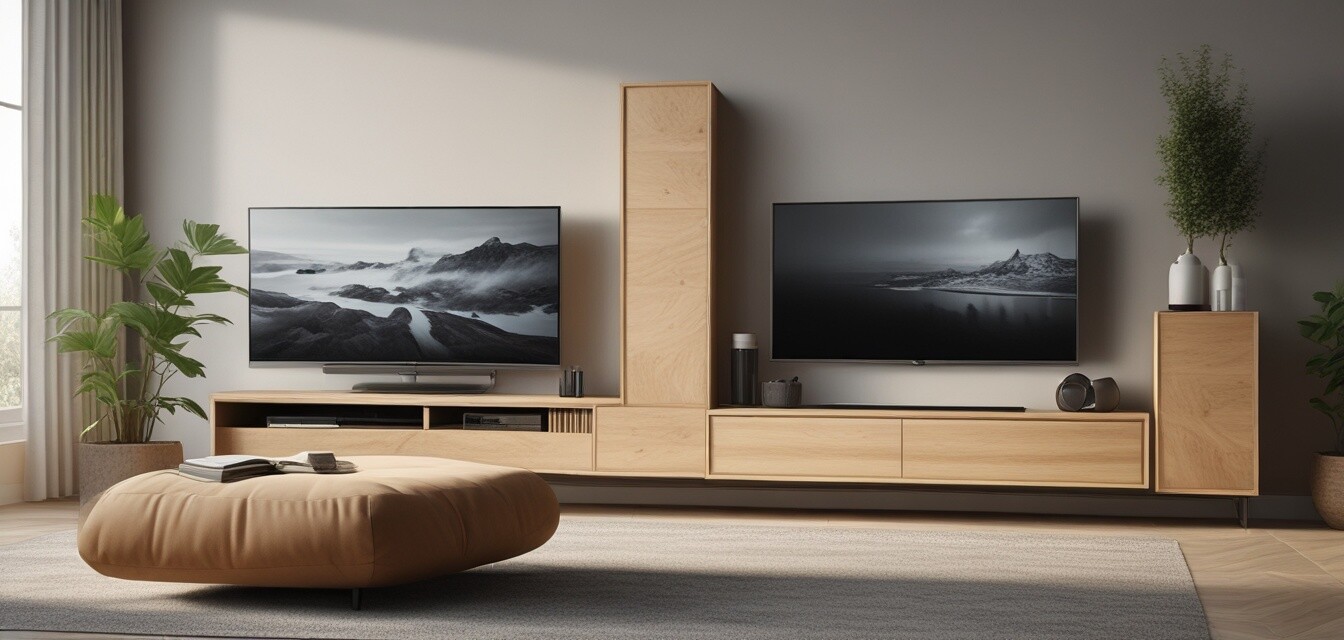
Floating vs. Traditional TV Stands: Which is Right for You?
Key Takeaways
- Floating TV stands save floor space and offer a modern aesthetic.
- Traditional TV stands provide sturdy support and offer additional storage.
- Choosing between the two depends on your style, space, and functional needs.
- Consider sustainable materials for an eco-friendly option.
When designing your home cinema space, one of the biggest decisions you'll face is what type of TV stand to use. The market offers various options, but two of the most popular are floating and traditional TV stands. This article will provide a detailed comparison, helping you understand the pros and cons of each type so you can make a confident decision for your living space.
Understanding TV Stand Options
What is a Floating TV Stand?
A floating TV stand is mounted on the wall, effectively creating a sleek and modern look. This design appears to hover without any legs touching the ground, giving the illusion of more space, which can be especially beneficial in smaller rooms.
What is a Traditional TV Stand?
Traditional TV stands are freestanding furniture pieces that typically have legs and provide a base for your television. These stands often come with shelves and cabinets for additional media storage.
Comparison of Floating and Traditional TV Stands
| Feature | Floating TV Stands | Traditional TV Stands |
|---|---|---|
| Space Saving | Excellent | Standard |
| Styling | Modern and minimalistic | Classic and versatile |
| Storage Options | Limited | Ample storage |
| Installation | Requires wall mounting | No installation needed |
| Environmental Impact | Can be made from sustainable materials | Varies by material choice |
Pros and Cons of Floating TV Stands
Pros
- Creates a modern, airy aesthetic.
- Maximizes floor space.
- Easy to clean underneath.
- Customizable heights for optimal viewing.
Cons
- Installation can be difficult.
- Less storage for media components.
- Weight capacity may be limited.
Pros and Cons of Traditional TV Stands
Pros
- Sturdy base supports heavier TVs.
- Multiple storage options for devices.
- No installation is necessary.
- Commonly available in various designs.
Cons
- Takes up floor space.
- Less contemporary appearance.
- Cleaning underneath may be inconvenient.
Factors to Consider When Choosing Your Stand
Deciding between a floating and traditional TV stand involves several considerations. Here are key factors to guide your choice:
- Room Size: Floating stands are great for small spaces, while traditional stands can occupy more space.
- Your Style: If you prefer modern aesthetics, a floating stand might be right. Traditional stands fit a more classic style.
- Storage Needs: Think about how much storage you need for electronics and media. Traditional stands typically offer more options.
- Installation: Assess your comfort level with DIY projects. Floating stands require more work for installation.
- Environmental Impact: Consider the materials used. Look for sustainable options that align with your eco-friendly values.
Installation Tips for Floating TV Stands
Beginners Section
- Choose the right wall type for mounting.
- Use a level to ensure proper installation.
- Securely anchor to studs for safety.
- Double-check all measurements before drilling.
- Have a second pair of hands to assist with mounting.
Conclusion
Ultimately, the choice between floating and traditional TV stands comes down to your personal preferences, living situation, and specific needs. By understanding the advantages and disadvantages of each type, you can make an informed decision that complements your home cinema and aligns with your sustainable living values. For more tips on how to choose the best eco-friendly furniture, explore our Buying Guides section.